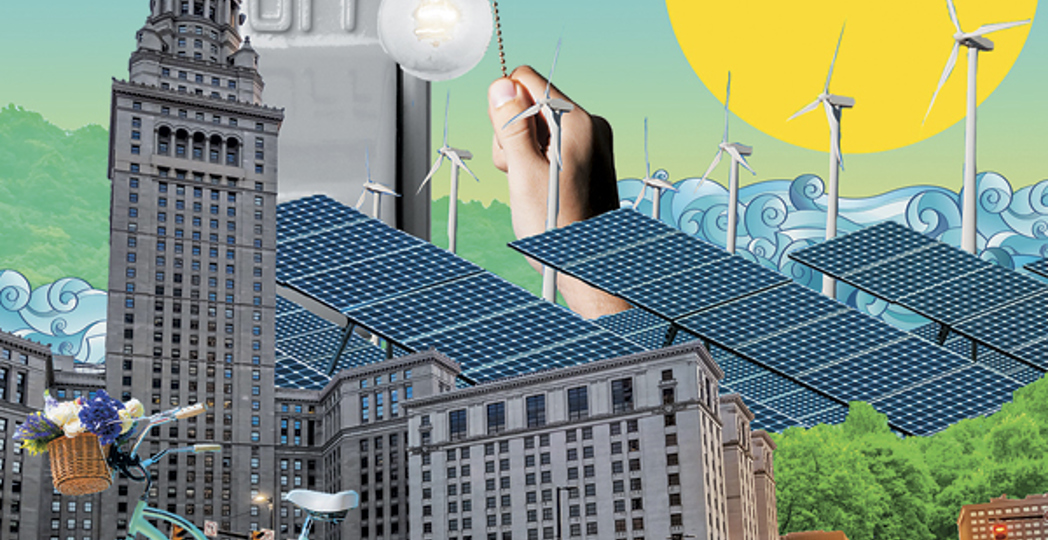Report Card: Sustainable Cleveland At 10 Years
by James Bigley II | Apr. 22, 2019 | 12:00 PM

Erin Stinard
The City of Cleveland’s 10-year plan to transform an industrial landscape into a sustainable, green city on a blue lake always seemed a bit optimistic. Launched in 2009, Sustainable Cleveland tried to combat climate change by confronting nine local “action areas,” such as zero waste initiatives and renewable energy. “[Sustainability] has to be good for people, all people, for the economy and for the environment,” says Cleveland’s chief of sustainability Matt Gray. “As we think about the future, as we rebuild, we do so with sustainability and the long term in mind.” On the initiative’s 10th anniversary, we grade the city’s progress.
Energy Efficiency
Since 2010, the nonprofit Cleveland 2030 District has helped 260 commercial buildings downtown and in University Circle reduce energy emissions by 20 percent. By helping them track usage and implement audits, the goal is for these buildings to reach carbon neutrality by 2030. “You can’t manage what you’re not measuring,” says Gray. “[Cleveland 2030 District] acts as a hub for these partners to come together.”
Sustainable Transportation
The city’s 70 miles of new bike infrastructure haven’t impacted commuter culture. Transportation emissions increased 16 percent between 2010 and 2016. “So many people are still coming from the suburbs into downtown,” says Gray. Seventy percent of those commuters drive solo. A $10 million plan to install 375 electric vehicle charging stations is idling as the city hasn’t yet prepared a proposal.
Clean Water
Tides may be shifting. The average beach advisory days in Cuyahoga County dropped most years since 2009. Record lows were set in 2016 and 2017, with 13 and 16 days, respectively, thanks to an increased effort to reduce untreated wastewater. Since 2006, 18 new fish species have been identified in the Cuyahoga River. “There’s been years and years of work on the Cuyahoga River to reduce pollution,” says Gray.
Renewable Energy
Major moves must be made to reach 100 percent renewable electricity by 2050. The city has reached 10 percent of that goal since 2009. The winds of change are coming, Gray says, with construction of six Lake Erie wind turbines set to begin by 2021 or 2022. “Over time, costs will come down precipitously,” he says. “It will have a huge impact in terms of climate change and local job development.”
Trending
-
1
-
2
-
3
-
4
-
5










